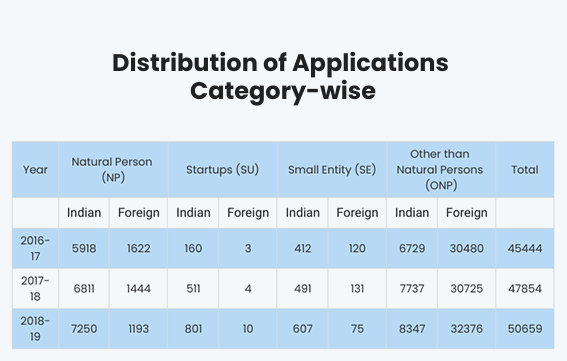Innovation is a critical factor for the advancement of society. Problem-solving inventions, especially technological ones, enhance society’s capacity to act and drive economic growth. That said, countries across the globe have varying levels of innovativeness, which can be gauged by global innovation ranking. As per the Global Innovation Index (GII) rankings 2020, India holds the 48th rank in 131 countries. Since a vast majority of companies in India include startups and MSMEs, this data essentially shows the status of their innovations. The following article covers how India can witness a new wave of IP savvy startups and MSMEs. Let’s start by exploring the global rankings data.
Are Global Rankings on IP Filings Reliable?
Intellectual property is a reasonable pointer to gauge the innovativeness of a country. That’s because if a company is innovative and wants to hold a dominant position in the market based on it, it would protect its intellectual asset via IP rights such as patents and trademarks.
India stands at the 8th position in terms of patent filings. While the country does make it to 8th rank, the margin between India and other top-performing countries is huge.
Similarly, one must observe whether the patent applications originate in India or are filed by applicants overseas. If the latter is the case, it means India is a good market for foreign countries, but the innovation in the country itself is not exemplary. In 2018-2019, foreign applicants filed almost two-thirds of patent applications and secured 80% of the patent grants in India.
Does That Mean India Lacks Innovation?
It would be naive to say so. It’s interesting to note that Indians have filed more patent applications abroad than in India over the past decade. Similarly, Indians also secured better grants in more developed patent offices in 2019.
With the third-largest startup ecosystem in the world, India is currently home to 38 startups valued at over $1 billion, popularly known as unicorns. In 2021 alone, the country added nine such startups despite the pandemic. If this pace continues, India will witness 100 unicorns by 2023. Based on this data alone, one can easily conclude that Indians are inventive.
Distribution of Patent Applications Originating from India
Patent filing statistics (see below) published by the Indian Patent office show that most of the inventions originating in India, nearly 40-50%, come from “natural persons” and startups. In other words, individuals are in a close fight with large corporations regarding inventing, unlike most other top patent filers where large corporations lead the patent filing. Furthermore, SMEs in India are lagging significantly behind in registered IP rights, unlike most other top patent filing destinations.

As per research conducted by European Patent Office (EPO), SMEs that own at least one IP right are 21% more likely to witness growth. Similarly, they are 10% more likely to become a permanent high-growth firm. Despite this, in 2018-2019, only 607 patents were filed by small entities in India compared to 7,250 by natural persons and 801 startups and 8,347 by large corporations.
The facts mentioned above and figures imply that India thrives on individual excellence than on proper innovation management processes and protocols. In other words, this means that Indians are highly innovative and creative when working alone and/or have decision-making powers, but when working in corporations (of any size), the focus changes. However, Indians leading innovation and patent filing when working in foreign offices of MNCs further indicate that Indians can do wonders if given the right environment and incentives.
So, Where Does the Problem Lie?
Indian Startups, SMEs and even larger corporations (including Indian offices of global MNCs) need to think about proper innovation management, so they capture all IP worthy ideas and increase IP filing leading to significant business rewards. However, to do this, we first need to identify the main improvement areas and below are some that we have identified:
- Ignorance of Senior Management – It is often the case (especially in SMEs and Startups) that IP is not top management’s priority and is more focused on revenues, brand building, and market presence. This is likely because top management undermines IP’s impact on their businesses’ top and bottom lines.
- Lack of Training/IP Knowledge – In India, there is a lack of awareness about patents, which results in innovators and companies having low self-esteem about their innovation and ideas. For instance, while interacting with the R&D team of a leading Indian watchmaker, Sagacious IP presented them with a report showing the patents filed by other leading watchmakers globally. Upon looking at those patents, the R&D team was amazed and repeatedly remarked that they have had similar ideas but never pursued them as they did not deem them patent worthy. They always thought of themselves as followers while watchmakers from Japan, Europe were doing groundbreaking inventions. This changed their perspective and brought significant changes to their business.
- Support System – Often in companies, inventors get many ideas while working. However, they do not have any system to easily submit the ideas to be reviewed by relevant people and get quick feedback on making those ideas work. Accordingly, an easy platform to submit ideas and a process to review and provide feedback on ideas quickly can do wonders.
- Lack of Proper Inventor Incentive Structure – In continuation to the above point, it is neither easy for inventors to submit their idea nor have proper incentives for doing so. Most countries and companies topping the charts on patenting have well defined and lucrative inventor incentivization structures, so inventors go an extra mile to turn them into reality.
Devising Solution for Fostering Innovation and IP Rights in India–
1. Innovation Management is a straightforward process to overcome almost all the above gaps so a company can comprehensively capture and create innovative business knowledge and leverage it for business growth. This helps businesses expand globally without fearing litigation and to generate additional revenue by licensing the IP in multiple countries. Some of the critical components of the innovation management strategy, that can help India top the patent filing and innovation charts, are –
- Problem/Opportunity Identification – There is no point in using resources to reinvent the wheel. Businesses need to correctly identify and put forth the correct problem to the inventors and supply them with all current literature, so they think beyond what already exists than recreating the already identified solutions. Supplying the literature landscape also helps them value their ideas more as they can sometimes see solutions proposed by global companies as straightforward.
- Defining Responsibility – In large companies and even SMEs, the areas of responsibility are not clearly defined, and innovation and IP subjects keep tossing between R&D, Legal and sometimes even production and finance. So, companies need to have a dedicated department that focuses on fostering innovation and promoting it with support from other departments.
- Inventor Sensitization and Training – Organizations should have a training calendar to familiarize inventors with the IP and its components.
- Invention Harvesting Process Setup – Having a very simple process to capture inventions and ideas can go a long way in promoting innovations. This may include giving inventors a secure platform where they can submit brief writeups, audio notes etc of their ideas/ inventions.
- Iterative Review and Invention enhancement process – Once an idea is submitted, critical feedback is required to refine it. Inventors often look for constructive feedback on time to grow their brainchild. Accordingly, a committee comprising technical and business experts must be set up to review and provide timely feedback to the inventors. Preferably, the committee should have members from various business functions and units to see the cross utility of proposed ideas.
- IP Creation and Filing Process Setup – There’s a need for defined roles and responsibilities once an inventor submits an idea. The whole IP process should be clearly laid out to prevent inventors from being in a blank spot. Once this is done, organizations will see a natural drift towards capturing ideas and filing them.
- Monitoring IP Misuse – Filing for IP is not enough; businesses must also monitor its infringement. The process helps in preventing competitors from using the intellectual property without the due authorization of the owner. Similarly, optimization and monetization of the IP can help organizations save resources and add new streams of revenue generation.
2. Well-Rounded IP Strategy – There are certain businesses where patenting their inventions may not work, but even those industries need IP strategy to use it for overall growth. An effective IP strategy enables businesses to face litigation head-on and formulate a plan to fight back instead of being reduced to a position to negotiate.
Furthermore, an IP strategy can help companies exploit opportunities created by IP gaps in the Indian market. For instance, certain inventions are protected in other countries and not, particularly in India. So, Indian companies can utilize those inventions freely and legally. Other few benefits of IP or IP strategy are –
- Identifying and mitigating risks at an early stage to avoid huge losses
- Increasing overall valuation
- Be better prepared for recessions and changing business needs
Conclusion
India is gradually turning into a territory where litigation is going to be an everyday affair. The Delhi high court recently constituted a new Intellectual Property Division for speedy disposal of IP disputes. Therefore, there is a greater need for IP awareness among businesses to not lag in IP filings and are prepared to deal with litigations effectively, if required. Similarly, there should be greater recognition and incentivization for inventors to promote groundbreaking inventions. If implemented effectively, such measures will likely result in a new wave of IP-Savvy Start-Ups and MSMEs in India.











